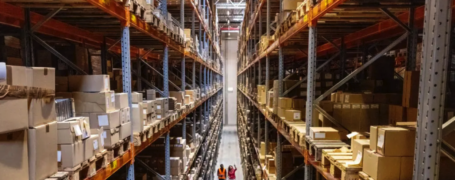Understanding the Theory of Constraints: A Guide to Breaking Bottlenecks

The Theory of Constraints (TOC) is a management philosophy introduced by Dr. Eliyahu M. Goldratt in his 1984 book The Goal. It focuses on identifying and systematically addressing the constraints that limit an organization’s ability to achieve its goals. By addressing these bottlenecks, businesses can optimize operations and drive significant improvements in efficiency, profitability, and output.
This article will explore the core principles of the Theory of Constraints, its application in various industries, and practical examples to help you implement it effectively.
What is the Theory of Constraints?
At its heart, TOC is based on the idea that every system has at least one constraint that limits its performance. These constraints could be physical (like a slow machine) or non-physical (like outdated policies). Improving anything other than the primary constraint yields limited results because the overall system is still bottlenecked by that constraint.
Key Assumptions of TOC:
- A chain is only as strong as its weakest link. The constraint dictates the pace and capacity of the entire system.
- Focusing on the constraint unlocks exponential improvements.
- Continuous improvement is essential. After resolving one constraint, another will emerge.
The Five Focusing Steps of TOC
TOC provides a systematic process known as the Five Focusing Steps to identify and address constraints:
1. Identify the Constraint
Locate the bottleneck that limits your system’s performance. Constraints can be internal (within the organization) or external (market conditions).
Example:
In a manufacturing plant, the slowest machine might be the constraint because it cannot keep up with demand.
2. Exploit the Constraint
Maximize the output of the identified constraint with existing resources. This might involve better scheduling, reducing downtime, or ensuring that the constraint is always operational.
Example:
Prioritize maintenance on the slow machine to reduce unplanned downtime and avoid running tasks that don’t contribute to customer demand.
3. Subordinate Everything Else
Align all other processes to support the constraint. This means adjusting non-bottleneck activities to ensure they don’t overproduce or create unnecessary work.
Example:
In a factory, slow down upstream processes to match the pace of the bottleneck, preventing excess inventory buildup.
4. Elevate the Constraint
If the constraint still limits performance after exploiting and subordinating, invest in increasing its capacity. This could involve purchasing additional equipment, hiring more staff, or redesigning processes.
Example:
Add another machine or upgrade the existing one to increase throughput.
5. Repeat the Process
Once one constraint is resolved, another will take its place. Continuously repeat the cycle to sustain improvements and avoid complacency.
Types of Constraints
1. Physical Constraints
Examples: Machine capacity, labor availability, raw materials, or space limitations.
Solution: Optimize usage or invest in capacity expansion.
2. Policy Constraints
Examples: Outdated rules, restrictive contracts, or counterproductive incentive systems.
Solution: Reevaluate and update policies to support system goals.
3. Market Constraints
Examples: Insufficient customer demand or market saturation.
Solution: Improve marketing, develop new products, or explore untapped markets.
Applications of TOC Across Industries
1. Manufacturing
- Scenario: A packaging line in a factory is slower than production lines upstream.
- TOC Solution: Identify the packaging machine as the constraint, ensure it’s running at peak efficiency, and explore automation to elevate capacity.
2. Healthcare
- Scenario: Patients in a hospital experience delays due to a shortage of radiology technicians.
- TOC Solution: Hire additional technicians or streamline scheduling to increase availability for critical scans.
3. Software Development
- Scenario: Code reviews delay project delivery timelines.
- TOC Solution: Increase the capacity of reviewers or implement automated tools to handle repetitive tasks.
TOC Tools and Techniques
1. The Five Focusing Steps
As outlined above, this systematic approach guides problem-solving.
2. The Drum-Buffer-Rope Method
- Drum: The system’s constraint, setting the pace for the entire process.
- Buffer: A safeguard to ensure the constraint is always working (e.g., buffer inventory).
- Rope: Synchronization mechanism to align all processes with the constraint.
Example:
In a production line, if the bottleneck machine is the “drum,” ensure there’s always a buffer of work-in-progress materials in front of it.
3. Throughput Accounting
Focuses on three metrics:
- Throughput: Rate at which the system generates money through sales.
- Inventory: Money tied up in the system (raw materials, finished goods).
- Operating Expenses: Money spent to turn inventory into throughput.
Benefits of Implementing TOC
- Improved Efficiency: By addressing the weakest link, overall performance improves.
- Increased Profitability: Constraints often hide opportunities for significant cost savings or revenue growth.
- Simplified Decision-Making: Focuses resources on high-impact areas.
- Sustained Growth: Encourages continuous improvement by highlighting the next constraint.
Limitations of TOC
- Over-reliance on a Single Constraint: Organizations with multiple bottlenecks may need more comprehensive approaches like Lean or Six Sigma.
- Change Resistance: Employees may resist changes, especially policy adjustments.
- Short-Term Focus: Solutions targeting immediate constraints may ignore long-term strategic goals.
Conclusion
The Theory of Constraints is a transformative framework that enables organizations to focus on their most critical challenges. By systematically identifying and addressing bottlenecks, businesses can unlock their full potential, improve efficiency, and drive sustained growth.
Ready to tackle your constraints? Start by identifying the weakest link in your system and take your first step toward excellence!





